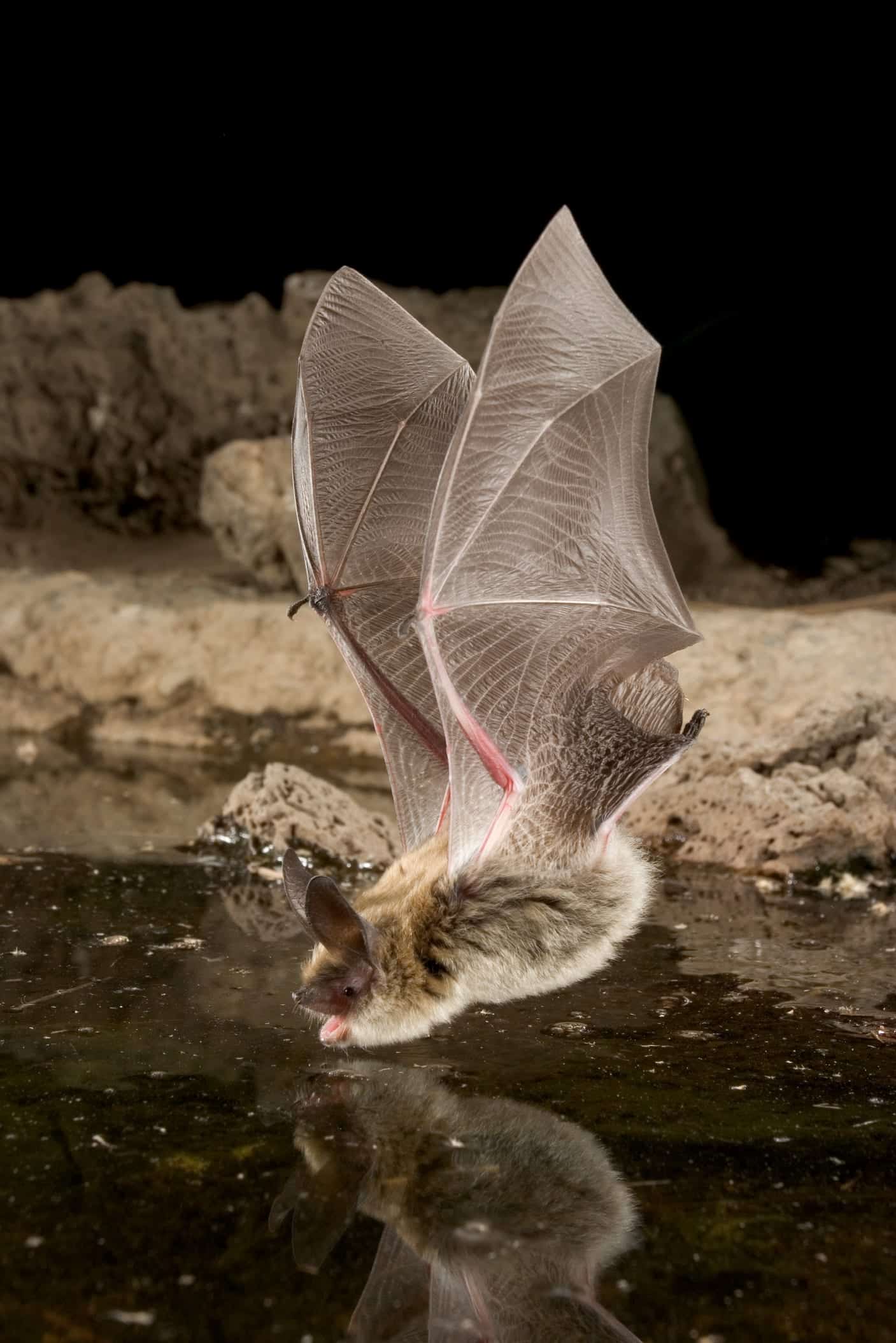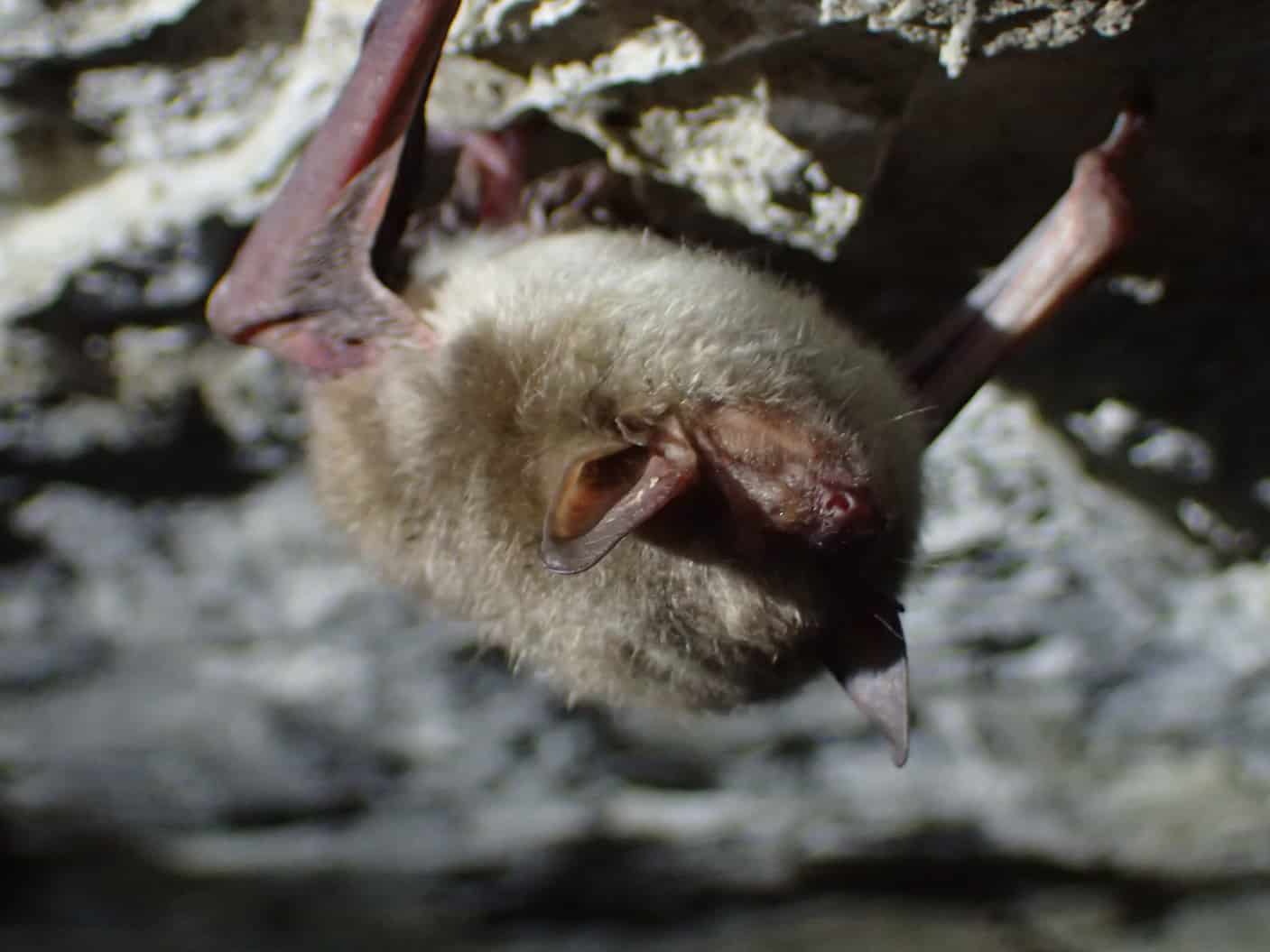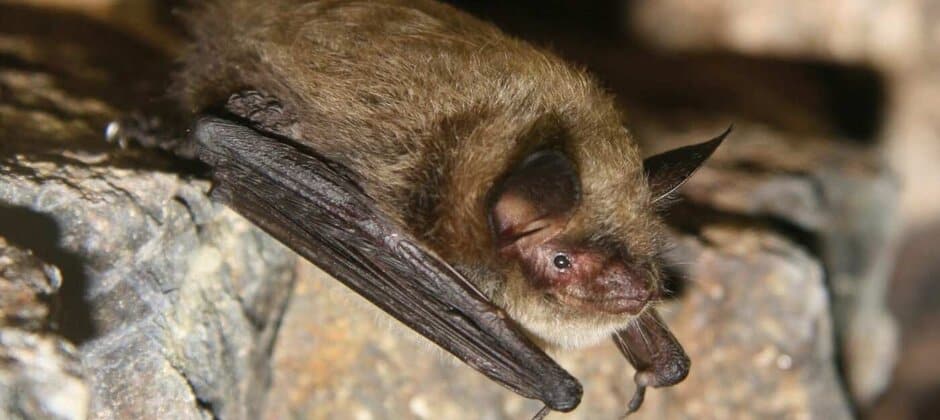Share this article
Which North American bats are most impacted by WNS?
Research on bat populations in North America reveals how much they are declining in areas impacted by white-nose syndrome.
The fungal disease has destroyed entire populations of bats in the United States and Canada. Bats in a large area that includes most of eastern and central North America and the Great Lakes region have been discovered with white-nose syndrome. Researchers recently looked at large-scale impacts of white-nose syndrome on five bat species in North America.
Tina Cheng, a data scientist with Bat Conservation International and the lead author of the study published recently in Conservation Biology, worked with state and provincial managers and researchers across North America to gather information from yearly bat counts conducted in their local areas or regions. Sometimes, these surveys were done through bat counts that occasionally involved using photos in particularly large roosting colonies. Researchers put together the largest collection of long-term data on winter bat counts and used the data to assess population trends and impacts of the disease.

Northern long-eared bats had a nearly 100% population decline in some areas.
Credit: Michael Durham/Minden Pictures, Bat Conservation International
The team had solid data on five species of the roughly dozen species of bats affected by white-nose syndrome: tricolored bats (Perimyotis subflavus), northern long-eared bats (Myotis septentrionalis), little brown bats (M. lucifugus), big brown bats (Eptesicus fuscus) and Indiana bats (M. sodalis).
Their analysis showed that northern long-eared bats, a federally threatened species in the U.S. and an endangered species in Canada, has been most impacted by the fungal disease. Some 79% of northern long-ears’ range lies with the WNS-affected zone. In many affected areas, the researchers found long-eared bats had nearly a 100% population decline in the core infection area. Long-eared bat colonies were always small in this area, but some that had hundreds of individuals before, now only number in the dozens.
“On average, it just wipes northern long-eared bats out,” Cheng said.
For tricolored bats, 59% of their range is in the WNS-affected zone, and they are declining at high rates in this area. Only 36% of little brown bats’ range is affected, but they are also highly impacted by the disease. While the latter once had colonies with tens of thousands of bats, they now only have colonies of thousands in many cases.

Some 59% of the range of tricolored bats lies in the core area affected by white-nose syndrome. Credit: Bat Conservation International
Other recent research published in Ecology and Evolution found that little brown bats have a high energetic cost when hibernating with white-nose syndrome. While only 36% of their range is currently affected, the Ecology and Evolution study also found that as the disease spreads, other little brown bat populations will see similar impacts.
“Originally, we hoped that colder temperatures in the northern part of the range or warmer temperatures in the southern part of the range would slow the disease process and allow bats there to survive,” said that study’s lead author Reed Hranac, a data analyst at the Colorado Department of Public Health and Environment, in a release. “Unfortunately, the energetics suggest little brown bats are going to suffer across their range.”
On the other hand, 93% of Indiana bats’ range occurs within the WNS-affected zone. But these bats, considered federally endangered in the U.S., don’t have the same population declines from the disease as some of the other hibernating bats. Indiana bats have several extremely large roosting sites that number in the tens of thousands of individuals that don’t seem particularly affected by the disease, despite being in the core of the WNS area.
Researchers aren’t completely sure why these Indiana bat colonies aren’t experiencing declines. It could have something to do with the local climate or conditions at those roosts, or it could be that bats are actually dying in these areas but are being quickly replaced by new recruits—something that wouldn’t show up easily in the bat counts.
Big brown bats seem the least affected of these five species. Only 32% of their range lies within the core WNS area, and the impacts on those bats in the WNS area is considered medium—among the lowest of the five species.
The research is ongoing. The data the scientists collected was added to the U.S. Geological Survey’s North American Bat Monitoring Program to centralize information so that the impact of white-nose syndrome can be better tracked in the future.
Header Image: Little brown bats are among the most affected species in the core area effected by white-nose syndrome. Credit: Jason Corbett








